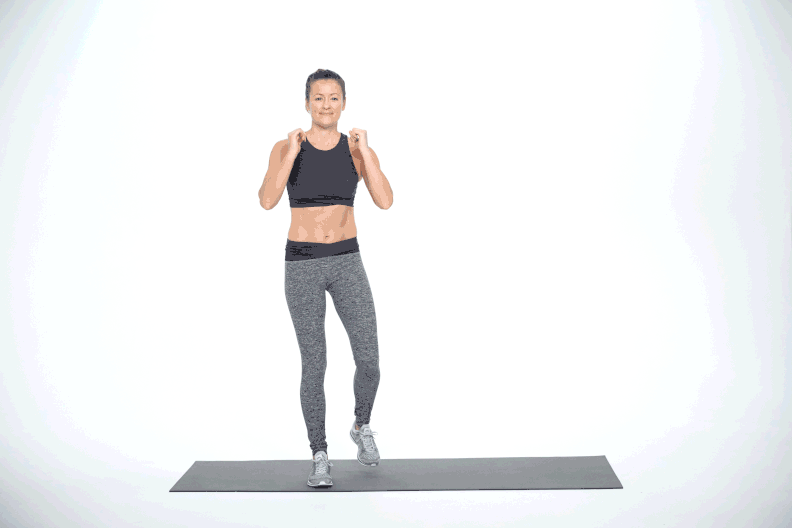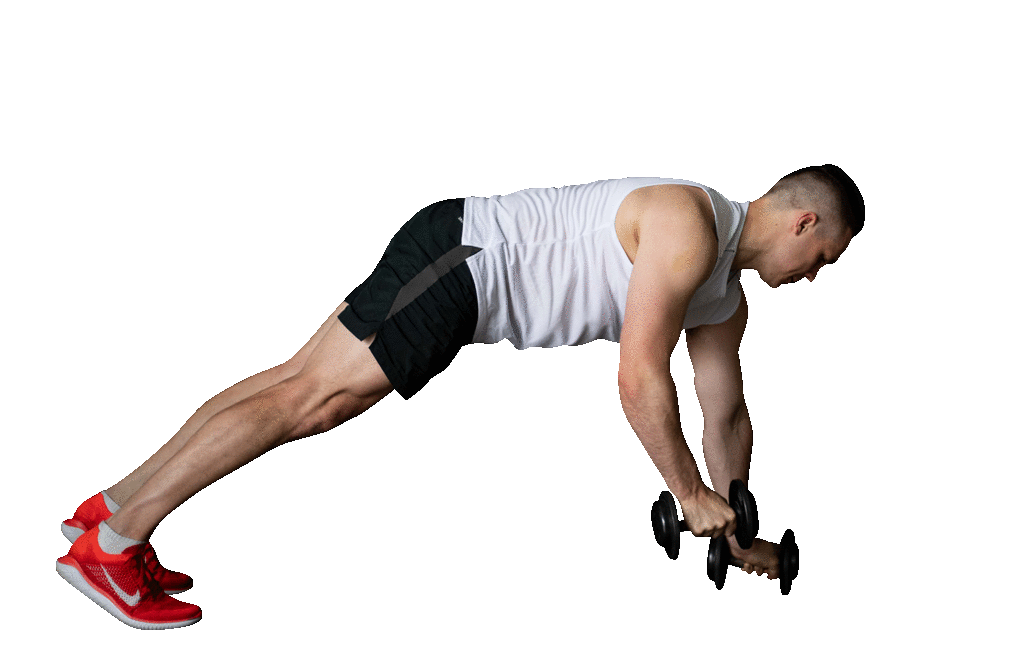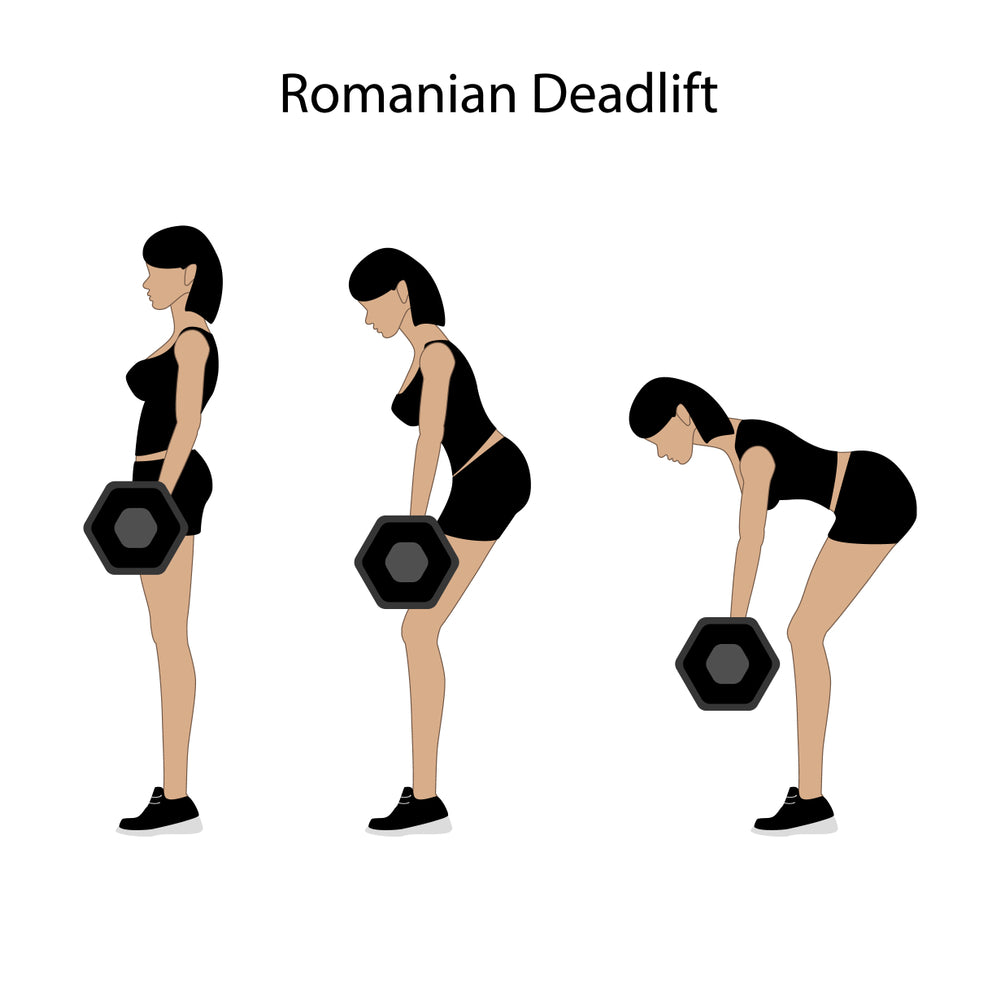The curtsy lunge, often overlooked in lower body workouts, adds a unique dimension to traditional lunges. This guide explores its mechanics, benefits, and variations, emphasizing its transformative power when combined with weights. Engaging glutes, quadriceps, and hamstrings, the curtsy lunge enhances leg strength, flexibility, and core stability. With diverse variations accommodating various fitness levels and the added challenge of weights, it becomes a dynamic and effective exercise for sculpting and strengthening the lower body.
Understanding the Curtsy Lunge
The curtsy lunge is a dynamic lower body exercise that involves crossing one leg behind the other in a diagonal pattern, resembling the traditional curtsy gesture. This movement engages multiple muscle groups, with a primary focus on the glutes, quadriceps, and hamstrings.
Additionally, the curtsy lunge challenges the adductors, abductors, and calf muscles, promoting overall lower body strength and stability. Incorporating the curtsy lunge into your workout routine not only enhances muscle definition but also contributes to improved balance and flexibility. Its unique diagonal movement pattern sets it apart, making it a valuable exercise for a comprehensive lower body workout. As with any exercise, performing curtsy lunges with proper form and gradually increasing intensity can lead to optimal results and lower the risk of injury.
Q.Are curtsy lunges better than regular lunges?
A:Curtsy lunges and regular lunges target different muscle groups. Curtsy lunges emphasise the outer glutes and inner thighs more than regular lunges. The choice between them depends on individual fitness goals and preferences. Including both variations can provide a well-rounded lower body workout.
Curtsy lunges introduce a unique diagonal movement pattern that places a heightened focus on the outer glutes and inner thighs. This emphasis stems from the lateral step involved in the curtsy motion, requiring engagement from the muscles along the sides and back of the hips. As a result, individuals seeking to sculpt and activate these specific areas may find curtsy lunges to be particularly effective.
On the other hand, regular lunges are characterised by a more straightforward forward or reverse motion, targeting the quadriceps, hamstrings, and glutes. While regular lunges provide a comprehensive workout for the lower body, their emphasis is not as pronounced on the outer glutes and inner thighs compared to curtsy lunges.
|
|
||
|
Aspect |
Curtsy Lunges |
Regular Lunges |
|
Primary Emphasis |
Outer glutes and inner thighs |
Quadriceps, hamstrings, and glutes |
|
Movement Pattern |
Diagonal motion with a lateral step |
Forward or reverse motion |
|
Muscle Engagement |
Engages outer glutes, inner thighs |
Targets quadriceps, hamstrings, and glutes |
|
Fitness Goals |
Ideal for sculpting and activating specific areas of the lower body |
Comprehensive workout for overall leg strength |
|
Preference and Variety |
Can be included for a well-rounded lower body workout |
Provides variety and complements curtsy lunges |
Understanding these differences allows individuals to make informed decisions based on their fitness goals and preferences, potentially incorporating both curtsy lunges and regular lunges into their exercise routine for a balanced and effective lower body workout.
What Muscles does a Curtsy Lunge work?
The curtsy lunge is a compound lower body exercise that targets several muscle groups, providing a comprehensive workout for the legs and glutes. Here's an in-depth explanation of the muscles worked during the curtsy lunge:
Gluteus Maximus
The gluteus maximus is the largest muscle in the buttocks and is responsible for hip extension. It aids in the movement of pushing the body back up to the starting position during the curtsy lunge.
The glutes are highly engaged in the curtsy lunge, particularly during the upward phase of the movement.
Quadriceps (Rectus Femoris, Vastus Lateralis, Vastus Medialis, Vastus Intermedius)
The quadriceps are a group of four muscles at the front of the thigh responsible for knee extension.During the curtsy lunge, the quadriceps work to straighten the knee as you return to the starting position.
Hamstrings (Biceps Femoris, Semitendinosus, Semimembranosus)
The hamstrings are located at the back of the thigh and are responsible for knee flexion and hip extension.Hamstrings play a role in stabilising the knee and controlling the descent during the curtsy lunge.
Adductors (Adductor Magnus, Adductor Longus, Adductor Brevis)
The adductors are a group of muscles on the inner thigh that bring the legs toward the midline of the body.Adductors are activated as you step one leg behind the other in a diagonal pattern during the curtsy lunge.
Calves (Gastrocnemius, Soleus)
The calves are responsible for ankle plantar flexion.Calves help stabilise the ankle joint during the curtsy lunge, particularly as you push off the ground to return to the starting position.
Erector Spinae (Lower Back Muscles)
The erector spinae muscles run along the spine and are responsible for back extension and spinal stabilisation.Erector spinae engage to maintain an upright posture and stabilise the spine during the curtsy lunge.
Core Muscles (Rectus Abdominis, Obliques, Transverse Abdominis)
The core muscles provide stability to the torso and assist in maintaining an upright posture.The core muscles work to stabilise the spine and pelvis throughout the curtsy lunge movement.
Understanding the involvement of these muscles highlights the holistic nature of the curtsy lunge, making it an effective exercise for targeting multiple muscle groups in the lower body. Incorporating this exercise into a well-rounded workout routine can contribute to improved lower body strength, stability, and overall fitness.
How to Perform the Curtsy Lunge?
Here's a step-by-step guide on how to perform the Curtsy Lunge:
Starting Position
-
Stand with your feet hip-width apart, maintaining an upright posture.
Diagonal Step
-
Choose one foot to be your starting foot and step it diagonally behind and across the other leg.
-
The motion should resemble a curtsy gesture, with the back leg crossing behind in a diagonal pattern.
Lunge Descent
-
Bend both knees, lowering your body into a lunge position. Ensure the front knee is aligned with the ankle to maintain proper form.
-
The back knee should hover just above the ground, creating a 90-degree angle with the front knee.
Return to Starting Position
- Push through the heel of the front foot to return to the upright position.
- Complete the set on one side before repeating the movement with the other leg.
Maintain Form and Breathing
-
Throughout the exercise, keep your core engaged and maintain a straight back.
-
Breathe steadily, exhaling as you descend into the lunge and inhaling as you return to the starting position.
Remember, proper form is crucial for maximising the effectiveness of the Curtsy Lunge and minimising the risk of injury. Start with bodyweight if you're a beginner, and gradually incorporate weights as you become more comfortable with the movement.
How to Perform the Curtsy Lunge with Weights

- Stand with feet hip-width apart, holding a dumbbell in each hand at your sides.
- Step one foot diagonally behind and across the opposite leg, lowering into a lunge position.
- Keep the front knee aligned with the ankle
- Return to the starting position
- Repeat on the other side.
Curtsy Lunge Benefits
- Targets the Glutes
The curtsy lunge places a significant emphasis on the glute muscles, helping to tone and strengthen the buttocks.For those seeking to sculpt and activate the glutes, curtsy lunges stand out as a targeted exercise. The unique range of motion emphasises the glute muscles, contributing to a firmer and more defined rear.
Works the quadriceps, hamstrings, and adductors, promoting overall lower body strength.
- Improves Balance and Stability
The diagonal movement challenges stability, enhancing balance and coordination.
- Joint-Friendly
Offers a lower-impact alternative to some other lower body exercises, making it suitable for various fitness levels.
Curtsy Squat vs. Curtsy Lunge
While both exercises involve lateral movement, the curtsy lunge and curtsy squat differ in execution. The lunge has a greater emphasis on stepping back and lowering the body, engaging a broader range of muscles, whereas the squat is a more vertical movement.
|
Aspect |
Curtsy Squat |
Curtsy Lunge |
|
Movement Pattern |
Involves a squatting motion. |
Combines curtsy motion with a full lunge. |
|
Muscle Engagement |
Emphasis on quadriceps, hamstrings, and glutes during squat. |
Intensifies engagement of glutes, quadriceps, and hamstrings throughout the movement. |
|
Depth of Movement |
Moderate squatting motion. |
Deeper range of motion, combining lateral step with a full lunge. |
|
Stability and Balance |
Provides a stable base as both feet remain on the ground. |
Challenges stability with a dynamic element, particularly during the lunge. |
|
Suitability for Different Fitness Levels |
Ideal for beginners or those focusing on foundational strength. |
Suited for intermediate to advanced fitness levels, demands increased stability. |
|
Adding Weights |
Can be performed with or without weights. |
Incorporating weights, like dumbbells or a barbell, enhances the challenge. |
|
Summary |
Foundational movement with a focus on squat mechanics. |
More dynamic and challenging, suitable for increased muscle engagement and balance refinement. |
Choosing between the curtsy squat and curtsy lunge depends on individual fitness goals, current fitness levels, and preferences. Incorporating both variations into a workout routine can provide a well-rounded lower body workout.
What are the alternative exercises of Curtsy Lunge?
Certainly! Here are alternative exercises to the curtsy lunge, along with explanations of each exercise in 2-3 steps and their benefits in 2-3 steps:
Reverse Lunge

The reverse lunge is a classic lower body exercise that targets the glutes, quadriceps, and hamstrings.
How to do it
- Start in a standing position with feet hip-width apart.
- Step one foot backward, lowering the body into a lunge position.
Benefits
- Strengthens the lower body muscles.
- Improves balance and stability.
Walking Lunge

The walking lunge adds a dynamic element to traditional lunges, promoting coordination and balance.
How to do it
- Begin in a standing position.
- Take a step forward with one leg, lowering the body into a lunge. Repeat with the other leg.
Benefits
- Engages multiple lower body muscles.
- Enhances cardiovascular fitness and leg strength.
Side Lunge

The side lunge targets the inner and outer thighs, providing lateral strength and flexibility.
How to do it
- Start in a standing position.
- Step one foot to the side, bending the knee while keeping the other leg straight.
Benefits
- Tones and shapes the thighs.
- Improves lateral movement and hip flexibility.
Step-Up

The step-up exercise focuses on unilateral leg strength and stability.
How to do it
- Use a sturdy platform or step.
- Step onto the platform with one foot, pushing through the heel.
Benefits
- Targets quadriceps, glutes, and calves.
- Enhances balance and supports functional movements.
Plyometric Lunge

The plyometric lunge combines explosive movements with lunges, boosting power and cardiovascular fitness.
How to do it
- Perform a standard lunge.
- Add an explosive jump, switching legs mid-air and landing in a lunge position on the opposite side.
Benefits
- Builds lower body power.
- Incorporates cardiovascular training.
Crossover Lunge

The crossover lunge targets the glutes, inner thighs, and outer thighs in a unique diagonal movement.
How to do it
- Stand with feet hip-width apart.
- Step one foot diagonally behind the other, crossing the midline of the body.
Benefits
- Shapes and strengthens the thighs.
- Enhances hip flexibility and balance.
Bulgarian Split Squat

The Bulgarian split squat is a unilateral exercise that challenges leg strength and stability.
How to do it
Stand facing away from a bench or elevated surface.
Place one foot behind you on the bench and lower into a lunge.
Benefits
- Develops quadriceps and glute strength.
- Enhances balance and isolates each leg.
Static Lunge

The static lunge is a basic lunge variation that allows for a focused workout on each leg.
How to do it
- Start in a standing position.
- Step one foot forward and lower the body into a lunge, keeping the back foot stationary.
Benefits
- Isolates and strengthens individual legs.
- Targets glutes, quadriceps, and hamstrings.
Incorporating these diverse lower body exercises into your routine can provide a well-rounded approach to strengthening and sculpting your legs and improving overall lower body functionality.
These alternative exercises provide variety in lower body training, targeting different muscles and movement patterns. Incorporating a mix of these exercises into your workout routine can contribute to a well-rounded lower body strength and stability.
Answering Key Questions
Q.Are curtsy lunges good or bad for you?
A:Curtsy lunges are generally considered good for you when performed with proper form. They help strengthen the lower body muscles, improve balance, and enhance flexibility. However, individuals with existing knee issues or discomfort should consult with a fitness professional or healthcare provider before incorporating them into their routine.
Q.Are curtsy lunges better than reverse lunges?
A:Curtsy lunges and reverse lunges differ in their movement patterns. Curtsy lunges involve a lateral step, targeting the glutes and inner thighs, while reverse lunges focus more on the quadriceps and hamstrings. Neither is inherently "better" — the effectiveness depends on specific fitness objectives and personal preferences. Integrating both into a workout routine offers variety and comprehensive muscle engagement.
Conclusion
In conclusion, the curtsy lunge emerges as a dynamic and transformative exercise, often overshadowed in lower body workouts. Its unique diagonal movement pattern engages a multitude of muscle groups, with a primary focus on the glutes, quadriceps, and hamstrings. When enriched with the challenge of weights, the curtsy lunge becomes a versatile tool for sculpting and strengthening the lower body, enhancing leg strength, flexibility, and core stability.
The exploration of alternative exercises and a detailed comparison between curtsy lunges and regular lunges underscores the importance of tailoring workouts to individual fitness goals. While curtsy lunges stand out for their emphasis on the outer glutes and inner thighs, regular lunges offer a comprehensive lower body workout. The key lies in understanding one's objectives and preferences, allowing for a well-rounded approach that combines the benefits of both exercises. Ultimately, integrating the curtsy lunge into a fitness routine, whether as a standalone or in conjunction with other exercises, holds significant promise for achieving a balanced and effective lower body workout.










